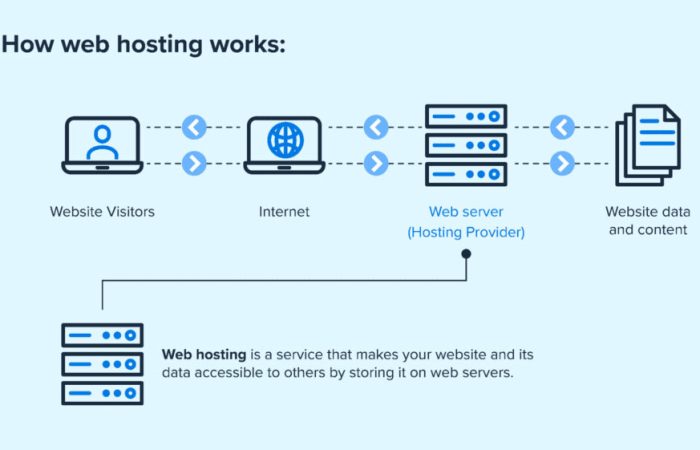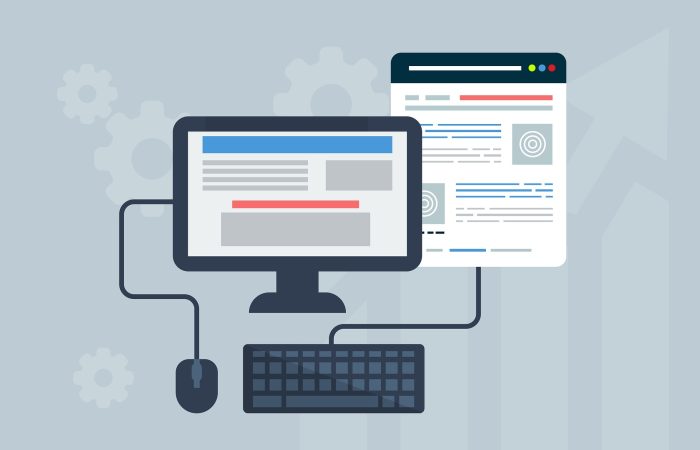In today’s digital age, having an online presence is more important than ever. Whether you…
Trends in Web Design for 2024
The world of web design is ever-evolving, driven by technological advancements and changing user preferences. As we step into 2024, it’s crucial for designers and businesses alike to stay ahead of the curve. In this comprehensive blog post, we’ll explore the “Trends in Web Design for 2024,” providing insights and practical tips to help you create stunning, user-friendly websites that captivate and convert.
Embracing Minimalism and Simplicity
Minimalism continues to be a dominant trend in web design, emphasizing simplicity and clarity. In 2024, this trend is taking on new dimensions with the integration of advanced features and technologies, ensuring websites remain visually appealing while offering enhanced functionality.
Key Aspects of Minimalist Design
- Whitespace: Effective use of whitespace improves readability and user experience, making content stand out without overwhelming the visitor.
- Simple Navigation: Streamlined navigation menus with fewer options help users find what they need quickly and effortlessly.
- Bold Typography: Clean, bold typography enhances readability and adds a modern touch to the overall design.
- Subtle Animations: Use subtle animations to draw attention to key elements without distracting users from the main content.
Dark Mode Dominance
Dark mode has gained significant popularity over the past few years, and it’s set to become even more prevalent in 2024. This trend not only provides an aesthetically pleasing alternative to light themes but also offers practical benefits such as reduced eye strain and battery conservation on OLED screens.
Implementing Dark Mode
- Dual Themes: Offer both light and dark modes, allowing users to switch based on their preference or device settings.
- Color Contrast: Ensure sufficient contrast between text and background to maintain readability in dark mode.
- Consistent Branding: Adapt your brand colors to suit dark mode without losing your brand identity.
Microinteractions for Enhanced User Engagement
Microinteractions are subtle, almost imperceptible animations or design elements that provide feedback or guide users through an interface. In 2024, leveraging microinteractions can significantly enhance user experience and engagement.
Examples of Microinteractions
- Button Hover Effects: Adding animations or color changes to buttons when hovered over encourages clicks and interaction.
- Form Validation: Real-time feedback on form inputs (e.g., green checkmarks for correct entries) improves the user experience.
- Loading Animations: Simple animations during loading times keep users engaged and reduce perceived waiting times.
Artificial Intelligence and Machine Learning Integration
Artificial Intelligence (AI) and Machine Learning (ML) are revolutionizing web design by enabling personalized user experiences and automating various design processes. The “Trends in Web Design for 2024” heavily feature AI and ML, making websites smarter and more responsive to user needs.
AI and ML Applications in Web Design
- Personalized Content: AI algorithms can analyze user behavior and preferences to deliver personalized content, recommendations, and offers.
- Chatbots and Virtual Assistants: Implement AI-powered chatbots to provide instant customer support and enhance user interaction.
- Design Automation: Use AI tools to automate repetitive design tasks, such as image resizing and layout adjustments, saving time and resources.
Voice User Interface (VUI) and Voice Search Optimization
With the rise of smart speakers and voice assistants, optimizing websites for voice search and integrating Voice User Interface (VUI) elements are becoming essential. In 2024, expect to see more websites incorporating voice commands and optimizing content for voice search queries.
Tips for Voice Search Optimization
- Natural Language Processing: Write content in a conversational tone that mirrors how people speak.
- Long-Tail Keywords: Use long-tail keywords and phrases that people are likely to use in voice searches.
- Structured Data: Implement structured data (schema markup) to help search engines understand and present your content accurately in voice search results.
3D Visuals and Immersive Experiences
As technology advances, 3D visuals and immersive experiences are becoming more accessible, offering a new dimension of interactivity and engagement. Incorporating 3D elements into your web design can create a memorable and captivating user experience.
Implementing 3D Elements
- Interactive 3D Models: Use 3D models that users can interact with, such as product visualizations that can be rotated and examined from different angles.
- Parallax Scrolling: Create depth and movement by incorporating parallax scrolling effects, where background and foreground elements move at different speeds.
- Augmented Reality (AR): Integrate AR features to allow users to visualize products in their real-world environment through their devices.
Sustainable and Eco-Friendly Web Design
Sustainability is a growing concern, and web design is no exception. In 2024, we see a rise in eco-friendly web design practices aimed at reducing the environmental impact of websites.
Sustainable Web Design Practices
- Energy-Efficient Hosting: Choose hosting providers that use renewable energy sources and have a commitment to sustainability.
- Optimized Performance: Reduce the size of images and other media, minimize code, and use efficient loading techniques to decrease energy consumption.
- Green Design Choices: Opt for minimalist designs that require fewer resources to load and maintain.
Inclusive and Accessible Design
Creating websites that are accessible to all users, including those with disabilities, is not just a trend but a necessity. Inclusive design ensures that everyone, regardless of their abilities, can navigate and interact with your website effectively.
Key Principles of Accessible Design
- Keyboard Navigation: Ensure all interactive elements can be accessed and operated using a keyboard.
- Alt Text for Images: Provide descriptive alt text for images to assist screen readers in conveying the content to visually impaired users.
- Contrast and Readability: Use high contrast between text and background to improve readability for users with visual impairments.
- ARIA Landmarks: Implement Accessible Rich Internet Applications (ARIA) landmarks to define regions of a web page, aiding screen reader navigation.
Custom Illustrations and Graphics
In 2024, custom illustrations and graphics are set to replace stock images, offering a unique and personalized touch to web designs. Custom visuals can effectively communicate brand identity and make websites stand out.
Benefits of Custom Illustrations
- Brand Identity: Tailored illustrations reflect your brand’s personality and values.
- Visual Storytelling: Use custom graphics to tell your brand story in a visually engaging way.
- Uniqueness: Stand out from competitors by using unique visuals that can’t be found elsewhere.
Mobile-First Design
With mobile devices accounting for the majority of web traffic, adopting a mobile-first design approach is more important than ever. This trend focuses on designing websites primarily for mobile devices and then scaling up for larger screens.
Mobile-First Design Strategies
- Responsive Design: Ensure your website adapts seamlessly to different screen sizes and orientations.
- Touch-Friendly Elements: Design interactive elements with touchscreens in mind, making them easy to tap and interact with.
- Fast Loading Times: Optimize your site for quick loading on mobile networks, which may be slower than desktop connections.
Data-Driven Design
Data-driven design involves using analytics and user data to inform design decisions. By understanding how users interact with your website, you can make improvements that enhance user experience and drive better results.
Implementing Data-Driven Design
- User Testing: Conduct user testing to gather insights into how people navigate and use your website.
- Heatmaps: Use heatmap tools to visualize where users click, scroll, and spend the most time on your site.
- A/B Testing: Run A/B tests to compare different design elements and determine which performs better.
Conclusion
In conclusion, the “Trends in Web Design for 2024” reflect a growing emphasis on user experience, accessibility, and technological integration. By embracing minimalism, dark mode, microinteractions, AI, VUI, 3D visuals, sustainability, inclusivity, custom graphics, mobile-first design, and data-driven strategies, you can create websites that are not only visually stunning but also highly functional and engaging.
Staying updated with these trends will help you stay competitive in the dynamic world of web design, ensuring your websites meet the evolving needs and expectations of users. As you incorporate these trends into your design practices, remember to prioritize the user experience, making your website accessible and enjoyable for all visitors.
Thank you for exploring the “Trends in Web Design for 2024” with us. We hope this guide provides valuable insights and inspiration for your web design projects in the coming year.




